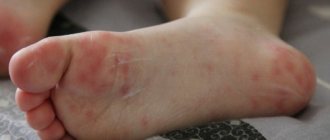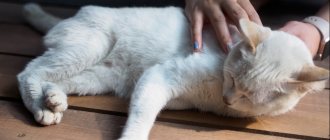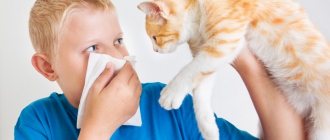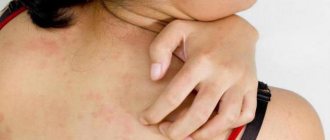Allergy to cat hair is a common problem affecting both adults and children. To effectively relieve the symptoms of inflammation, it is necessary to carry out timely diagnosis and treatment. You can also avoid health complications without giving up your beloved pet: to do this, you should have a hypoallergenic cat at home.
Allergy to cat hair
Allergy to animal fur
Allergies are caused not only by pets, but also by any other animal. The inflammatory process in the body can begin after contact with a cow, horse, mice, etc. Since most people live in cities, reactions to the hair of cats and dogs are the most common and studied.

Cat fur is often recklessly mistaken for the main culprit of allergies.
Important! The opinion that it is animal fur that acts as an allergen is erroneous. More often, the causative agent is proteins excreted in urine, feces, sweat, and pieces of the epidermis. Animal hair also contains similar substances, but in relatively small quantities. For this reason, allergies to wool in their pure form are rare.
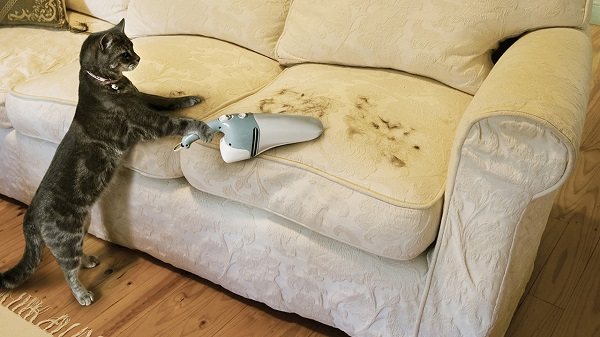
Minimal contact with animal fur is sufficient to trigger an allergic reaction.
Most often, the proteins that cause the reaction come from the skin, from excrement, from urine to the fur. As a result of contact between a person and a pet, allergens enter the body and the inflammatory process starts.
By the way! The reaction can occur not only through direct contact with the animal, but also after staying in the room where the animal lives or previously lived. Interior items, furniture, and clothing with wool also pose a risk for allergy sufferers.

Allergies never appear immediately - it is useless to draw hasty conclusions about its causes.
It is important to consider the fact that allergies never appear on first contact. The immune system, when first encountering an irritant, produces antibodies. Externally, the process occurring inside the body is not felt. And only when encountering the allergen again does the inflammatory process begin, which manifests itself in the typical symptoms of an allergic reaction.
For this reason, it is important to interact with the pet several times before deciding whether it is safe.
Video - Animal allergies: answers to the most frequently asked questions from an allergist
Allergy to dogs
Dogs pose less of a risk to an allergy sufferer than cats. Dogs pay less attention to their toilet. The likelihood of transferring harmful substances along with saliva to the fur is significantly reduced.

Pollen, paint, dirt - everything that a dog encounters on the street, it carries in its fur.
At the same time, dogs spend a lot of time outdoors. There they are constantly in contact with plants, other animals, and various objects. As a result, animals bring home a large amount of dirt, germs, and bacteria on their fur.

Sometimes a dog acts as an innocent carrier of allergens that are not directly related to it.
All these substances can cause allergies in humans who come into contact with the animal. Moreover, the allergy will be caused precisely by the allergens carried by the dog, and not by its own fur. For example, a person may be allergic to pollen.
After contact at a party with a dog that came from the street, the person will begin an inflammatory process. An erroneous conclusion will be drawn about the presence of a reaction to animal fur, when the real allergen is pollen carried by the dog.
A dog's allergenicity depends on:
- from fur (animals with hard, non-shedding fur are less dangerous);
- on size (small breeds are more suitable for allergy sufferers than large ones).

Small, non-shedding dogs are suitable for allergy sufferers. For example, Shih Tzu
By the way! Puppies of the same breed can have different levels of allergenicity. Therefore, before purchasing a pet, you should make sure that it is compatible specifically with it.
Allergy to cats
Cats are more dangerous than dogs. They constantly take care of their hygiene - they lick their bodies from all sides. Dangerous microbes and bacteria found on the genitals, tail and paws are eventually transferred to the fur.
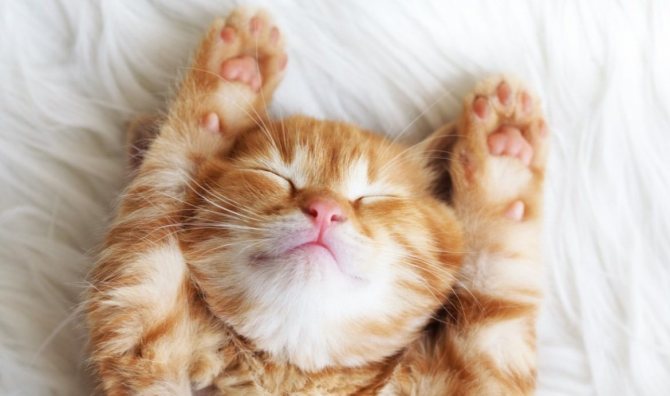
It is believed that cats emit more allergens than cats
The vast majority of cats have thick and fairly long hair, which becomes a carrier of allergens. Moreover, the animal’s saliva itself contains specific enzymes, which are a powerful irritant for people with weakened immune systems.
A significant negative factor is the use of a tray. Contact of paws and fur with a tray filled with bacteria guarantees the transfer of a huge number of microbes to the animal.
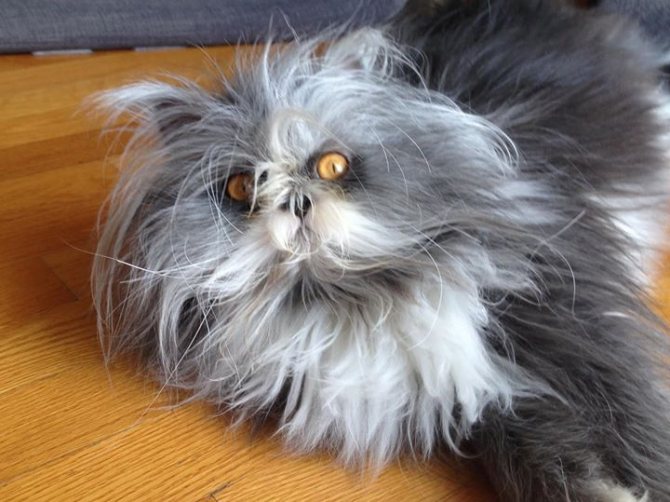
Cat owners should know that there will be cat hair even where there has never been a cat.
All of these factors make cats the most allergenic of possible pets. Moreover, male representatives are more dangerous than females. Cats with long fur that is prone to shedding are also more likely to be allergic. This wool remains everywhere: on carpets, on floors, on bed linen, on upholstered furniture, in the toilet, etc.
By the way! Different breeds have different degrees of risk to humans. A common misconception is that the currently popular “hairless” cats cannot cause allergies. Since the main allergen is not fur, but irritants carried by animals, the absence of hair in pets does not give their owners any guarantees.
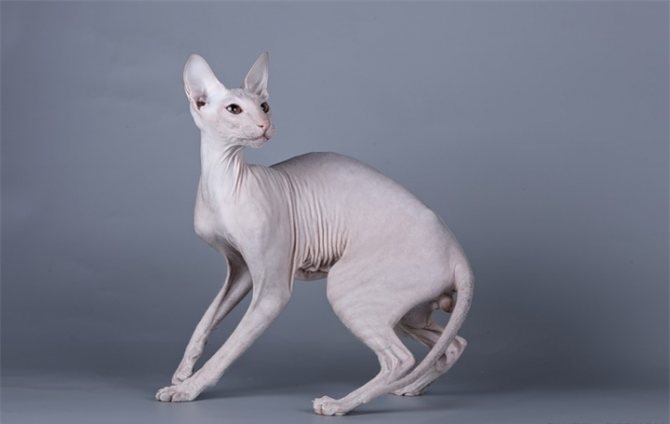
Sphynxes are living proof that the absence of hair does not guarantee the absence of allergies in the owner
What does your cat need?
Before you decide to get a pet, take care of its safety and yours. Many owners naively believe that it is enough to buy a bowl, a tray and a couple of toys. As a result, the cat is angry and constantly bites, the apartment has an unbearable smell from excrement, and family members have allergies. By the way, such pets are not a cheap pleasure. Therefore, first calculate all your future expenses, weigh the pros and cons, and only after that make a final decision.
Choosing cat litter
The average cost of a good tray made of high-quality material is about 200 rubles. When buying a litter box, expect that one cat will need two containers. They will have to be changed once every two years, since during this time the smell has time to penetrate into the plastic. But you can then accustom your pet to a regular toilet or to the street.
These days you can find bio-toilets in the form of hutches in pet stores. They look like a big box with doors. This will prevent your cat from spraying urine all over the floor or scattering sand. Thanks to the carbon filter, which absorbs unpleasant odors, the air is not polluted. The downside of such a wonderful device is its high cost.
Another option, attractive due to its cleanliness, but deterred by the price, is a toilet with napkins. For the first time, such a tray went on sale in Japan. And only after some time these products became available in Russia. The main advantage is that a cat going about its business does not come into contact with its excrement. The pet's paws remain dry and clean, and the allergen is not spread throughout the apartment.
Choosing cat litter
Sand with flavoring - from 40 rubles per 1.5 kg, sawdust - from 50, a product that turns into a gel - from 120. What is better to choose depends on your financial capabilities and needs. Do you want to clean less often, but not be bothered by the smell? Well, a tenth of the budget will go only to filler.
- Wood filler
An inexpensive and practical option for those who do not plan to spend a lot on keeping a pet. Pine or cedar sawdust will not cause allergies in you or your family. At the same time, they cope quite well with the smell, and the cat will not spread the contents of the tray throughout the apartment.
- Bentonite filler
As soon as moisture gets on the raw material, the wet particles begin to clump into lumps. To clean up after an animal, just walk over the surface with a special spatula. Unfortunately, this option is not suitable for those who are allergic to cats and their excrement. The filler also does not handle odors well.
- Mineral filler
Quickly absorbs moisture and does not allow unpleasant odors to pass through. This filler is made from chalk, mineral additives and quartz. As for the downsides, this is the dust that will settle around the tray. After the cat looks into the toilet, you will have to wipe the floors with a damp cloth to get rid of white marks.
- Silica gel filler
If you are allergic to cats, buy silica gel litter. It has bactericidal properties, completely absorbs moisture, and does not form lumps. Very convenient and safe to use. Your pet will be able to go to the litter box for a whole week, and you will not have to clean up after him all this time.
Choosing accessories for cat care
Among other things, you will need a special spatula with which you will clean the tray from excrement. Choose a device with a long handle so that you do not have to come into contact with the allergen. You can also get a fragrance with an antibacterial effect.
Please note: waste should not be thrown into the toilet as it may become clogged. For these purposes, it is better to purchase plastic bags. And, of course, don't forget about rubber gloves. Perform any procedures (washing the cat, cleaning the litter box) only in them.
What toys to buy for a kitten
To ensure that your cat leaves as little marks and scratches on your chair or sofa as possible, buy him a scratching post. As mentioned above, your pet will need a comfortable home. If you wish, you can equip a window sill or table with a special lounger.
Don't forget about small toys: balls, mice, feathers. If you do not purchase these items, the kitten will start playing with what is available - curtains, tablecloth, carrier, your hands and feet. By the way, the choice of such things should be approached with all responsibility.
So, manufacturers soak rubber balls and mice with a special liquid (catnip) to make it interesting for the fluffy to play with them. By the way, you may be allergic to this. Therefore, when buying a toy, smell it. If you immediately start coughing or sneezing, look for something else.
Prevalence of the problem
According to medical research, animal allergies occur in approximately 15% of the world's population. The proportion of patients who react specifically to animal fur is minimal in this 15%. As already mentioned, more often allergy sufferers react to proteins secreted by animals.

There has been an increase in the prevalence of pet allergies in recent years.
The simplest assessment criterion is the presence of woolen clothing in the wardrobe of an allergic person. If a person can wear such things without harm to his health, then with a high degree of probability he is not allergic to wool.
Allergy to cats: symptoms and signs
Often a person does not suspect that he has such a problem. It may take some time from the moment of contact with an animal until typical allergy symptoms appear. Diagnosis is complicated by the fact that there may be no direct contact at all. It is enough for a person to spend some time in the room where the pathogen was located, or to touch things with wool.
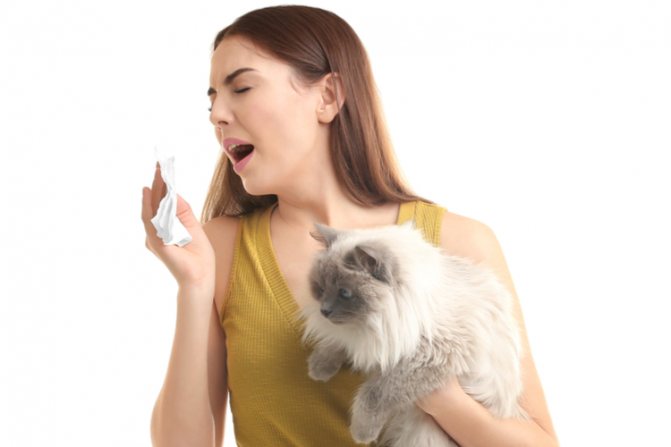
The duration of allergy attacks can vary greatly - from several hours to six months
In the vast majority of cases, symptoms appear within the first hours. At first, the signs of the onset of the reaction are not pronounced, but within two to three hours the process reaches its peak.

List of antihistamines
The intensity of symptoms leads to a significant deterioration in well-being and the inability to lead a normal lifestyle. Only immediate use of antihistamines helps in the shortest possible time (within about 20 minutes) to relieve the manifestations of the inflammatory process.
The severity of symptoms differs in adults and children.
In adults
Table 2. Allergy symptoms in adults
| Inflammatory process | Symptoms |
| Conjunctivitis | Itching; Swelling of the eye (a person feels as if there is a foreign body in his eye); Redness; Tearing; Difficulty in visual perception. |
| Rhinitis | Nasal congestion; Labored breathing; Itching; Sneezing; Runny nose. |
| Bronchitis | Cough; Dyspnea; Soreness; Discomfort. |
| Bronchial asthma | Dry, severe cough; Sputum separation; Suffocation; Heaviness in the chest; Wheezing; Psychological stress. |
| Skin reactions | Hives; Rash; Redness; Peeling; Itching. |
| General signs | Feeling of heat (due to vasodilation); Enlarged lymph nodes; Weakness; Irritability, anxiety; Drowsiness; Prostration. |
By the way! Of all the manifestations of allergies, bronchial asthma poses the greatest threat to life. This condition requires immediate medical attention.
In no case should you ignore the manifestation of severe allergy symptoms. In the absence of timely treatment, anaphylactic shock and Quincke's edema may occur. Such conditions are the most dangerous.
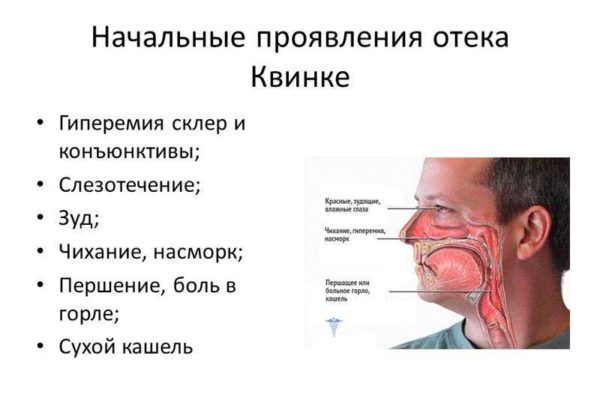
Primary symptoms of Quincke's edema
In children
The characteristic symptoms and signs of an allergic reaction in children are the same as in adults. But if in adults the symptoms manifest themselves quite intensely, then in children the reaction is even more pronounced. The process in a child’s body develops rapidly due to the imperfection of the immune system of children, which is susceptible to the negative effects of external factors.
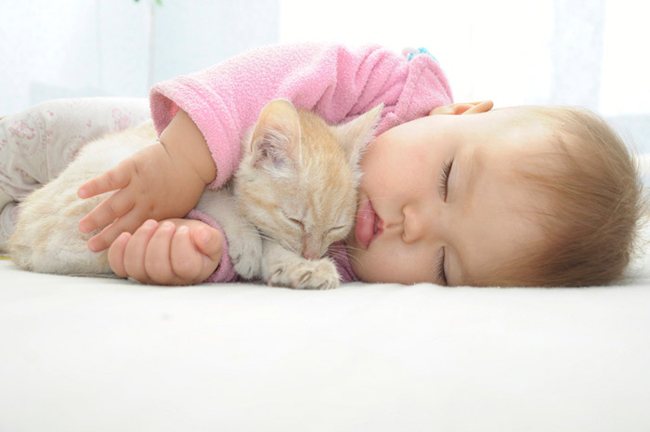
An allergen not recognized in time can cause chronic diseases in a child later in life.
Cats pose a particular danger to babies, since children in the first years of life spend a lot of time on the floor and pick up various objects from the floor. Children often put toys and other objects with animal fur in their mouths. With direct contact between children and pets, the risk of allergies increases.
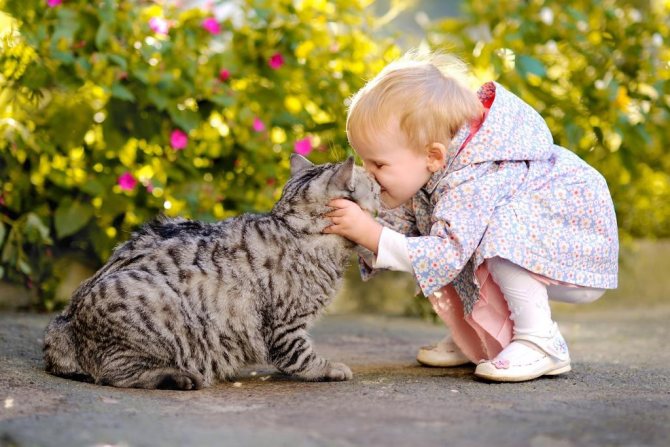
A child in close contact with an animal may be at greatest risk
You can often observe the appearance of irritation on the skin of babies at the point of contact with cat hair. At the first signs of an incipient allergic reaction, it is necessary to take action, since the inflammatory process in the child will develop at a critical speed.
Video - Children's allergies: treatment methods
If allergies are not treated
The result of ignoring allergies can be:
- worsening symptoms and development of bronchial asthma;
- getting used to the pet and the complete disappearance of all negative manifestations.
A feature of hypersensitivity to cat protein is that it can either appear suddenly or disappear unexpectedly. The following situation is quite possible: after a kitten appears in the house, a household member suffering from allergies will sneeze for a while and take antihistamines, and then the pet will fall asleep next to him without any unpleasant consequences. It happens that getting used to your pet can lead to the complete disappearance of symptoms. In this case, if the unwanted manifestations of allergies are not too intense, you can try to wait it out for a while, but only after consulting a specialist.
Video: Dr. Komarovsky about the treatment of allergies to cats
Diagnostics
Timely diagnosis is the most important aspect of solving the problem, since it allows us to conclude that there is a reaction to a specific allergen. It is on the basis of the diagnostic results obtained that pet owners can decide on the need to exclude contact with the animal.
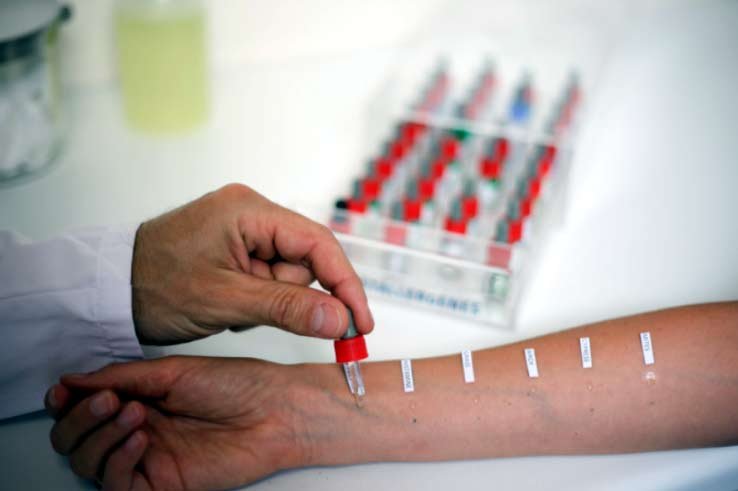
The most common allergy test is skin testing, but it may not be suitable for some people.
At the first suspicion, you should consult an allergist, who, after conducting the necessary research, will conclude that you have an allergy. If related problems caused by a reaction to an allergen are identified, it may be necessary to contact other specialists:
- for skin manifestations - see a dermatologist;
- for bronchial asthma - see a pulmonologist;
- if kidney function is impaired, see a nephrologist;
In critical conditions (Quincke's edema, anaphylactic shock), an emergency call may be required.

Failure to provide first aid can cost an allergic person his life
When making a diagnosis, the allergist conducts a survey, examines the patient, and prescribes laboratory tests.
The most informative analyses:
- general blood analysis;
- general urine analysis;
- blood chemistry;
- immunogram;
- identification of lymphocytes sensitized to cat tissues;
- prick tests.
Treatment
Traditional therapeutic measures
- taking antihistamines that block the development of the reaction by suppressing the activity of pathogenic microorganisms (Cetrin, Suprastinex, Zodak, Dezal, Neoclaritin, Allegra, Telfast, etc.);
- the use of eye drops that relieve swelling of the mucous membrane (Allergodil, Cromohexal, Opatanol, Lecrolin, etc.);
- the use of nasal drops, sprays (“Vibrocil”, “Nosephrine”, “Nasonex”, “Cromohexal”, etc.);
- the use of drugs that relieve bronospasm (Berotek, Berodual, Salbutamol, Seretide).
- the use of ointments that eliminate skin manifestations (Advantan, Elokom, Fenistil2);
- taking sorbents that remove the allergen (Polysorb, Smecta, activated carbon, Sorbex, Sorbolong, etc.).
Drug treatment should be carried out in courses. The duration of taking medications and their dosage must be determined by a doctor. Regular preventive use of antihistamines can significantly make the patient’s life easier.
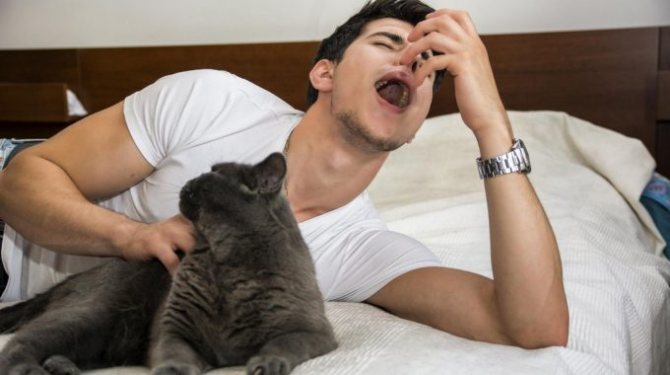
Remember that prevention should be periodic and should not be neglected under any circumstances.
Not all of the drugs listed are suitable for children, so when prescribing a course of treatment for young patients, doctors are guided by age restrictions and choose the most gentle method of treatment. Children under 3 years of age are recommended to be given antihistamines in the form of syrups - they will not cause a negative reaction in children.
Emergency measures
If the situation requires taking emergency measures, you must:
- Avoid contact with the allergen.
- Remove the allergen from the body by taking a sorbent.
- Eliminate symptoms using targeted agents (eye drops, nasal sprays, etc.).
- Take an antihistamine.
- Call an ambulance (if the condition does not improve).

If a child develops symptoms, an ambulance should be called immediately
Autolymphocytotherapy
A modern method of solving the problem is autolymphocytotherapy. The essence of the method is to use the patient’s own immune cells to restore the protective functions of his immune system. As a result, the level of susceptibility to potential allergens is significantly reduced.

Autolymphocytotherapy has its contraindications, which need to be discussed with a specialist.
During therapy, the patient undergoes several procedures on an outpatient basis at intervals of several days. During each procedure, he is given a vaccine containing a certain dose of the allergen. Each time the dose is increased. Thus, the immune system develops resistance to the irritant and gradually stops responding to it.
The number of necessary procedures is 6-8 with an interval of 2-6 days. As a result, a person ceases to feel any symptoms of the incipient inflammatory process upon contact with pets.

The therapeutic effect of autolymphocytotherapy
Treatment of allergies in adults and children
In principle, it is possible to get rid of sensitivity to cats, which is very annoying and dangerous due to its complications, but this process is long, requiring patience and some financial costs. Features of treatment and results are not the same for each specific case. There are several types of therapy.
Allergen elimination
This technique can be called therapeutic and prophylactic, because without it, in fact, it is impossible to carry out full-fledged therapy. It represents the removal of the source of allergens from the patient’s environment. This is not always possible, but even limiting exposure to such a source can reduce the number of attacks and the need for medication. The technique is especially indicated in cases where the possibility of drug therapy is limited, for example, during pregnancy. If hypersensitivity to an animal is detected, it is better to place it in good hands. But if the cat has become a member of the family and you don’t want to get rid of it, you should follow the following rules:
- carry out wet cleaning daily;
- do not forget to ventilate the rooms;
- remove carpets and massive curtains, so-called dust collectors;
- do not allow the pet to enter the bedroom or sit on the bed;
- wash your hands after every touch;
- use nasal filters;
- Use a special anti-allergy shampoo to wash your pet (weekly).
Drug therapy
Taking various medications is a standard way to relieve symptoms of cat protein hypersensitivity. An approximate drug therapy regimen is presented in the following table.
Table: groups of drugs for the treatment of allergies with examples
| Drug group | Examples of means, their features, action |
| Antihistamine | Suprastin, Diazolin, Tavegil, Fenkarol are 1st generation drugs that help with itching, rashes and swelling. Today, they are practically not prescribed by specialists due to the presence of side effects, in particular, addiction and drowsiness. Benadryl, Claritin, Loratadine, Fenistil - 2nd generation drugs, blocking the action of irritants, improve the general condition. Have fewer side effects. Zirtec, Telfast, Cetrin are 3rd generation drugs, safe and distinguished by their effectiveness and duration of action. Erius, Xyzal are the latest generation drugs, histamine receptor blockers, highly effective without side effects. |
| Decongestant | Sudafed and Allegra-D - relieve swelling and help remove mucus. |
| Sorbents | Polysorb, Enterosgel, activated carbon - removing allergens from the body, eliminating the cause of the disease. |
| Hormonal | Kestin, Prednisolone, Hydrocortisone, Ultralan - are prescribed for severe symptoms and no effect from taking antihistamines. |
Auxiliary drugs are Vibrocil, Prevalin, Avamis, Nasonex, Fliconase - to relieve nasal congestion. Akriderm ointment relieves itching that accompanies allergic rashes.
ASIT therapy
ASIT therapy, a technique that involves introducing a small amount of an irritating substance into the body - that is, an allergen, with a gradual increase in dose - will help you completely get rid of allergies. At the end of the course, the hypersensitivity reaction should completely disappear or be minimized. Such treatment is carried out only as prescribed by an allergist and is strictly controlled by him.
Traditional treatment
There are also folk recipes for getting rid of allergies to proteins from a member of the “mustachioed” family. Rinsing them with chamomile decoction can bring relief from nasal congestion and redness of the eyes. The following recipe for treating allergies is also common: 10 tsp. Duckweed should be infused in 0.5 liters of vodka for a week. You need to take this product 15 drops 3 times a day, diluting it with water. Baths with the addition of a mixture of herbs - St. John's wort, chamomile, string, sage, celandine and valerian root can alleviate the condition. Each component is taken in an amount of 10 tsp, everything is mixed. To take a bath, you need to brew and leave for half an hour 5 tbsp. l. herbal mixture in a liter of boiling water. You can take a bath enriched with infusion every 3 days.
Some herbs are themselves allergens and therefore should be used with caution. It is advisable to do this after consultation with a doctor and as a supplement to the main therapy.
Prevention

Before purchasing an animal, it is advisable to take allergy tests in advance to avoid further problems.
Compliance with preventive recommendations will not only reduce the risk of allergies, but also reduce the severity of the inflammatory process in a person susceptible to the reaction. You need to do the following:
- see an allergist;
- always carry prescribed medications with you;
- undergo treatment courses;
- constantly increase immunity (proper nutrition, hardening, sports, proper sleep, vitamins);
- monitor your well-being;
- get hypoallergenic cat breeds;
- bathe the animal frequently;
- do not allow the animal on the bed, table, or furniture;
- carry out regular wet cleaning;
- wash, clean animal accessories (mat, tray, dishes);
- avoid too close contact with the animal;
- wash hands after contact.
